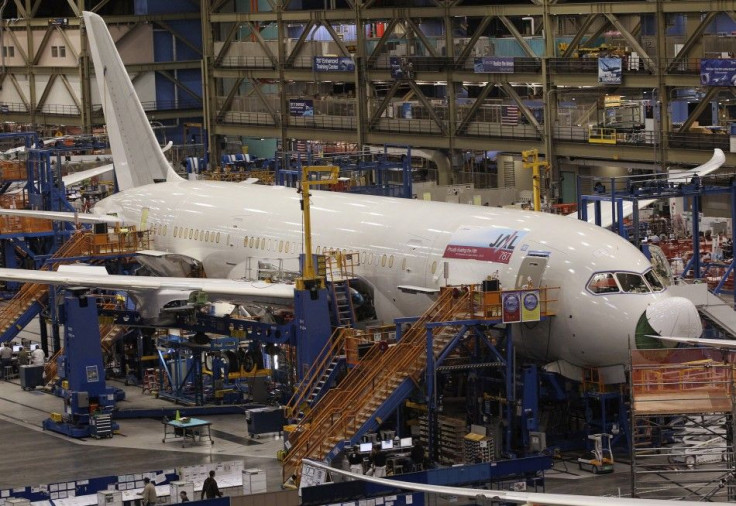5 Factors that Could Lead to a Slow-Growth U.S. Economy

It's a scenario that many Americans, if not most, probably do not want to hear about: the United States enters an era called a new normal slow-growth economy -- perhaps for as long as a decade.
The evidence supporting that new normal' GDP growth argument, one in which the U.S. GDP grows at no greater than 2.0-2.5% per year, is compelling.
It's a substantially lower growth rate than the nation is accustomed to, and it will constrain corporate revenue growth and earnings growth and stock prices, among other ripple effects.
The U.S. has already registered below-trend GDP growth at this recovery's start (mid-2009 to present), and the economy recently hit an even softer patch: an unacceptable 1.0 percent GDP growth in the second quarter, after a minuscule 0.4 percent gain in the first quarter.
The new normal slow-growth U.S. economy is a sobering one, but given that candor is almost as valuable as good news, to paraphrase former President John F. Kennedy, listed below are five reasons why the slow-growth conditions might continue:
1) Housing sector doldrums. The U.S. housing sector's overbuild during the leveraging bubble and the subsequent bust means it will take at least another year to work off excess inventories in single-family homes, condos, co-ops, and the like.
What's more, slumping prices will cause some families who would typically trade-up to stay put -- eliminating additional sector activity. As a result, housing invariably will not be as strong a U.S. GDP growth engine as it historically has been during previous expansions.
2) Demographics. The U.S.' low birth rate and immigration's inability to keep population growth trending at a high level will have implications for many commercial sector, and obviously for public policy.
The U.S. population is aging, and it's largest generation, the post-World War II Baby Boom generation, is starting to retire. That implies even less consumer spending, as adults typically decrease spending in their retirement years. What's more, the low birth rate will place more pressure on existing citizens to fund Social Security and Medicare, and absent a large pay-out adjustment, payroll taxes will have to increase.
3) Export traffic jam. Here, the news is mixed regarding impact on U.S. GDP. In general, U.S. multinational corporations are well-positioned, from product quality, market position, and distribution network standpoints, for the global economic expansion.
In other words, U.S. corporations are lean, productive, and ready for battle. The problem is, however, so are are many other foreign-based competitors. Moreover, dozens of formidable emerging market nations have export-dominant economies: they have to export to grow. Hence, the current global expansion will probably likely feature a surplus of goods (at least initially), and intense competition. That's likely to keep U.S. export revenue below what it would be without those surplus goods, limiting the tailwind from exports to U.S. GDP.
4) U.S. budget deficit reduction. Spending for the bank bailout, related financial system measures, and the fiscal stimulus package will have to paid for. In addition, health care reform will limit entitlement spending growth in Medicare and Medicaid, but additional spending cuts and tax increases will be needed -- removing even more resources will be removed from the private sector. Net result? Historically, tax increases have constrained U.S. GDP growth, at least in the beginning of their implementation.
5 Frugal consumers. This will likely be the most important factor in the new normal, slow-growth U.S. economy.
True, since the end of World War II, or so it seems, the words frugal and consumer have not gone together in the United States.
Indeed -- times have changed: Americans are in the midst of making up for a decade of unsustainable over-consumption -- spending fueled in many cases by debt -- by increasing their savings.
Currently, Americans are saving at about a 5 percent annual rate, but it was higher earlier in the current economic expansion. Also, asset declines in stock portfolios and homes are further impressing on upon Americans of the need to save: that projected large 401K or home appreciation bonanza in 15 to 20 years may not be large as one had hoped for. As a result, because consumer spending accounts for roughly two-thirds of U.S. GDP, a sustained reduction in consumption will weigh on GDP growth.
Public Policy/Economic Analysis: One of the best commerce and credit minds of our time, PIMCO's Bill Gross, who heads the world's largest bond fund, has forecast a new era -- a capitalism with limits that will feature lower return-on-equity, lower GDP growth, and smaller job creation. He's not the only one forecasting a mild economic recovery.
What could critique the above and enable the United States to experience robust 5 percent GDP growth or higher, moving forward? That's a good question. There are no 5 percent expansion forecasts, but the key to achieving it concerns the appearance of a domestic catalyst -- a growth engine(s) that really adds to job growth. Green technology holds promise, but it's not expected to create millions of new jobs, at least initially.
Another sector that could spawn millions of new jobs: high-end manufacturing. As most readers/investors know, much of low-cost, low-end manufacturing has been transferred to lower-cost labor countries, especially China, hence if the U.S. is going to have a strong manufacturing presence, it will be in high-end, technology-intensive manufacturing.
And so far, the initial results in that sector are encouraging for the United States. Companies like Boeing (BA) with its high-tech 787 Dreamliner, Caterpillar (CAT) with agriculture and construction equipment, and United Technologies (UTX) with jet engines, elevators, and air conditioning/heating/ventilation system, are finding ample demand for the their products in emerging and developed markets around the world.
In all probability, to avert the new normal slow-growth scenario, the United States will need two new growth engines -- two new sectors of growth, and it is not impossible: the flexible, resilient U.S. economy has done it before.
© Copyright IBTimes 2024. All rights reserved.





















